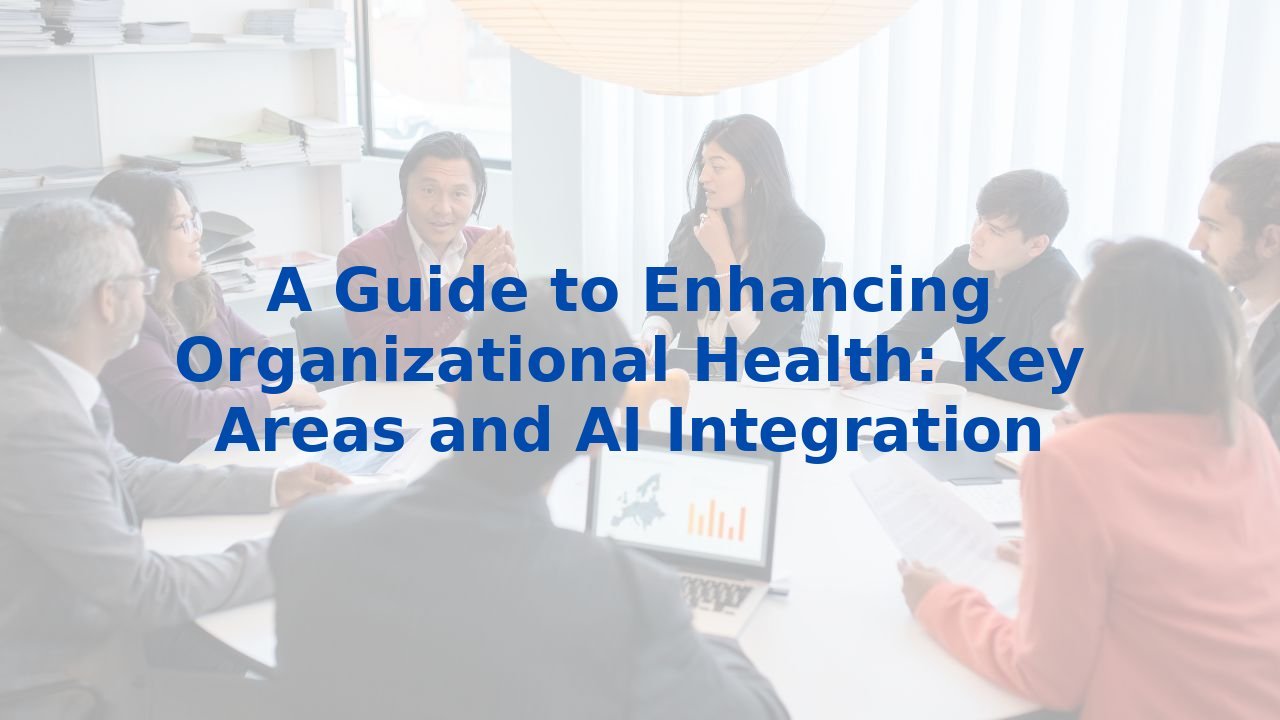A Guide to Enhancing Organizational Health: Key Areas and AI Integration
A Guide to Enhancing Organizational Health: Key Areas and AI Integration
In the ever-evolving landscape of the business world, maintaining organizational health is more than just a strategic goal; it’s a necessity. To foster higher performance and overall well-being, leaders need to focus on multiple key areas, namely purpose, leadership, decision-making, employee experience, technology, and social responsibility. As organizations increasingly embrace technology, particularly artificial intelligence (AI), they unlock opportunities to enhance these essential processes and drive efficiency. This guide will explore how AI can transform organizational health and why investing in training your workforce for AI is paramount.
1. Purpose and Leadership
AI should be leveraged in alignment with the organization’s core purpose and leadership ethos. Effective leadership is not just about directing a team or meeting targets; it is about cultivating an organizational culture that embraces AI as a supportive tool rather than a substitute for human insight. By doing so, leaders create a transparent environment where AI fosters innovation while maintaining ethical integrity. This alignment enhances the organization’s overall mission and purpose.
2. Decision Making
One of the most powerful applications of AI lies in its ability to enhance decision-making processes. With the capacity to analyze massive datasets at unprecedented speeds, AI delivers data-driven insights that empower leaders to make informed decisions. By employing machine learning algorithms, companies can predict market trends, identify risks, and optimize resource allocation. The result? More strategic decision-making that drives the organization forward.
3. Employee Experience
Enhancing the employee experience is pivotal for organizational health, and AI has a critical role to play here. By automating mundane tasks, AI can liberate employees to invest their energies in creative and intellectually stimulating endeavors. For example, chatbots can manage routine inquiries, while AI-driven platforms can analyze employee data to tailor wellness programs aimed at boosting mental health and work-life balance. The outcome is a more engaged workforce that feels valued and supported.
4. Technology
AI serves as a transformative force in modern business operations. Here are several ways AI enhances key organizational processes:
- Efficiency and Productivity: By automating repetitive tasks, AI ensures high levels of consistency and speed, allowing employees to focus on work that requires creativity and critical thinking.
- Data-Driven Decision Making: AI transforms complicated data into actionable insights, empowering leaders to create a culture rooted in transparency and accountability.
- Collaboration: AI-driven collaboration tools enhance teamwork by breaking down silos, making communication smoother and more inclusive.
- Personalization: AI can analyze data to develop personalized programs for employees, thus augmenting engagement and success rates.
5. Social Responsibility
Integrating AI into business practices comes with an ethical compass that organizations must not overlook. It's essential to ensure AI systems are transparent, explainable, accountable, secure, and fair. Establishing clear guidelines for responsible AI use builds trust among employees and stakeholders, fostering engagement and creativity. Organizations must prioritize bias-free algorithms and transparent decision-making processes to uphold their social responsibility.
The Benefits of Training Employees for AI
AI’s effectiveness hinges not only on its own capabilities but also on the proficiency of the employees who wield it. Training your workforce in AI can yield transformative benefits:
- Adaptability: By embracing continuous learning, employees cultivate a culture of innovation, helping them remain relevant in a tech-focused environment.
- Enhanced Skills: Comprehensive training equips staff with the skills necessary to utilize AI effectively. They learn to interpret AI-generated insights, maximizing the potential of data for strategic decisions.
- Improved Collaboration: Familiarity with AI technologies enables employees from different departments to collaborate more effectively, forming a cohesive organizational culture.
Conclusion
AI has the potential to revolutionize organizational health, enhancing efficiency, bolstering decision-making, and improving the employee experience. However, the successful integration of AI is contingent upon a thoughtful approach that considers ethical dimensions and social responsibility. Investing in employee training is crucial to unlocking the full potential of AI and ensuring the organization remains competitive. By focusing on purpose, leadership, decision-making, employee experience, technology, and social responsibility, organizations can harness AI responsibly and drive higher performance, ultimately achieving a healthier organizational landscape.



